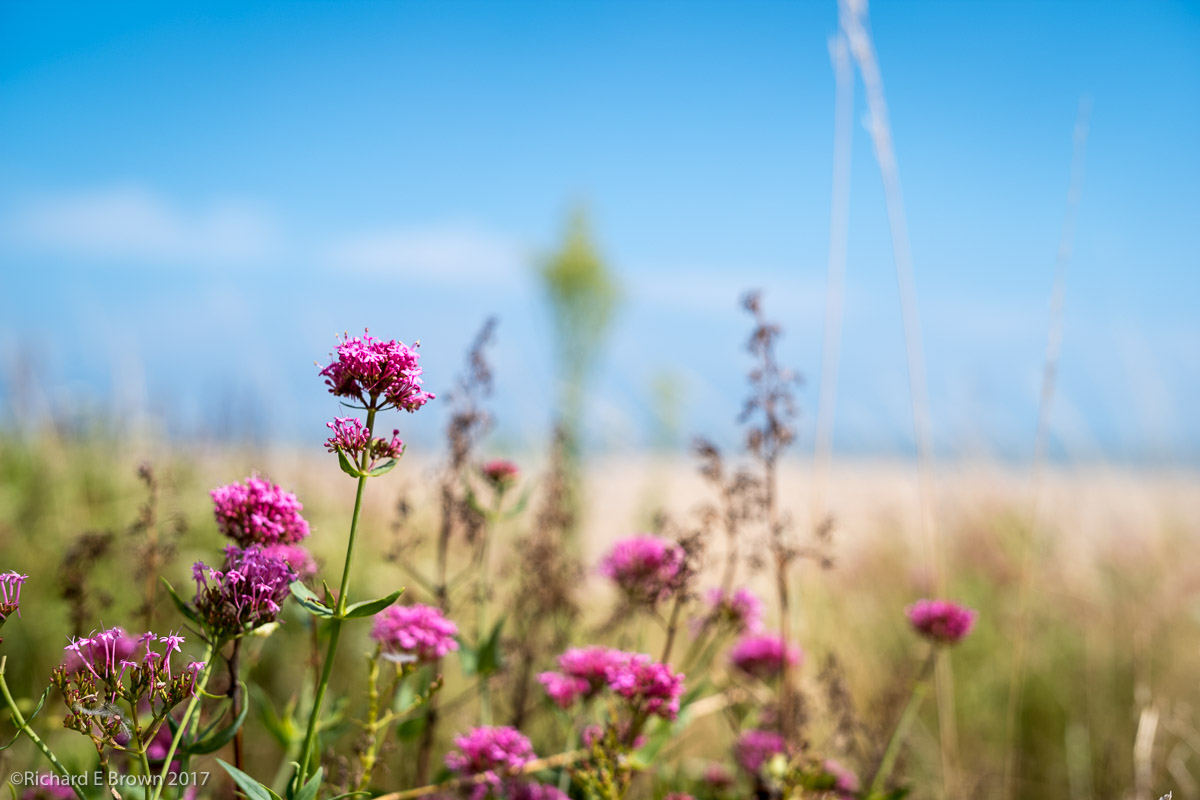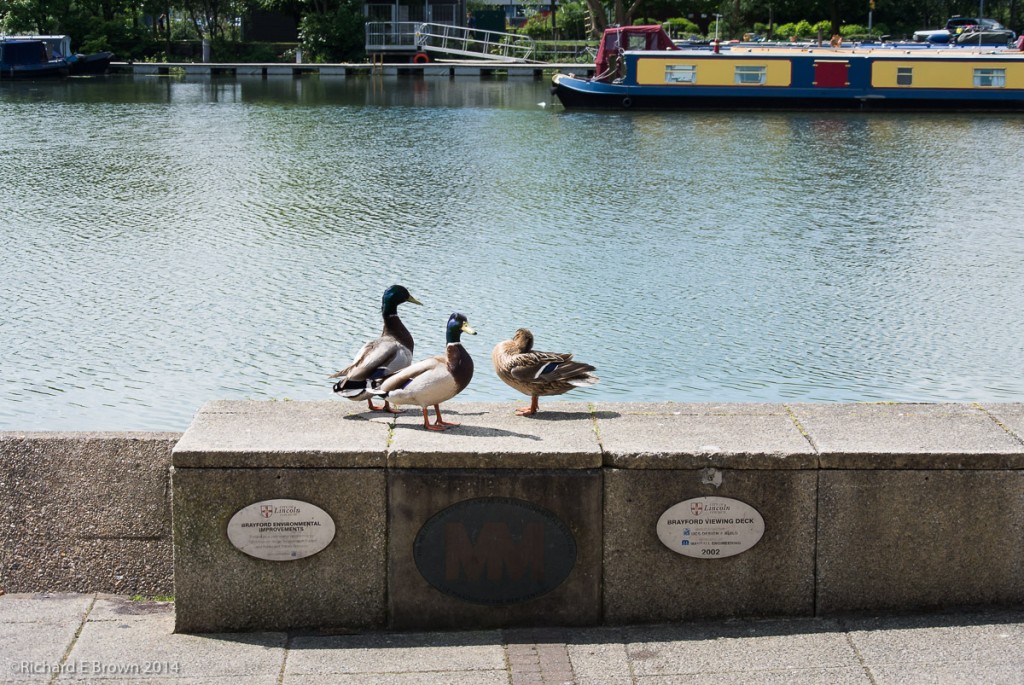 Leica M8
Leica M8
Leica 35mm f/2 Summicron-M ASPH
35mm, 1/180 Sec at f/8, ISO160
Post Processed in Adobe Lightroom V5.4
On a MacBook Pro, OS-X 10.9.3
Sensor/Film Size and Perspective
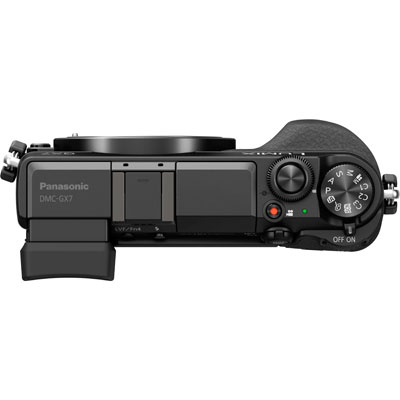 Most people are aware changing the format; eg MicroFourThirds, 35mm full frame, 5 x 4 large format etc, changes the field of view. So a 25mm lens on a MicroFourThirds camera has the same field as a 50mm on 35mm and approximately 150mm on 5 x 4.
Most people are aware changing the format; eg MicroFourThirds, 35mm full frame, 5 x 4 large format etc, changes the field of view. So a 25mm lens on a MicroFourThirds camera has the same field as a 50mm on 35mm and approximately 150mm on 5 x 4.
What fewer people realise is the impact on aperture and ISO.
Recently Chris posted a video that covered this area quite well.
One thing I never see mentioned is the impact on perspective.
So does the rule about field of view also apply to perspective?
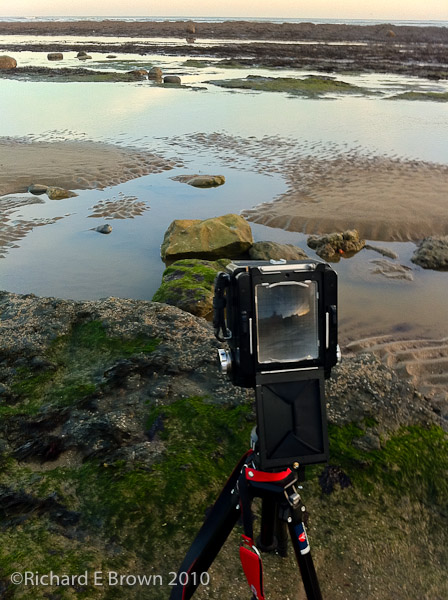 People are advised when shooting a head and shoulders portrait to use a focal length of 85mm (35mm full frame), as this gives a pleasing perspective. It flattens perspective giving a more pleasing look to the face.
People are advised when shooting a head and shoulders portrait to use a focal length of 85mm (35mm full frame), as this gives a pleasing perspective. It flattens perspective giving a more pleasing look to the face.
But what if you are a MicroFourThirds user. Does a 40mm lens give a similar perspective affect as that of a 85mm on full frame?
Well, we know the field of view is close to the same so let’s try a thought experiment.
Stand about 10 metres from someone and stare at their face; now do the same at 1 metre and finally 0.1 metre. The closer you get the more the perspective changes and their nose gets bigger and bigger, its the same as if you use a wide angle lens and shoot them from a distance with a very high resolution camera, zoom right in and the perspective is quite flattened. Walk close and take the same picture and the features become more pronounced.
They say the 85mm lens makes the nicest portraits on 35mm and that is because it forces you to stand far enough away to make the perspective pleasing.
The perspective is a result of the camera to subject distance and not the lens.
Leica Monchrom M230 Announced
Well the rumours were wrong, it turns out the new Monochrom M230 is in fact just a chrome version of the current black M9 CCD Based Monochrom M.
Never mind still a stunning camera and still in a league of its own.
Lightroom Key wording Part2
So you want to start key wording but the thought of sitting down and creating your own list fills you with dread, what can you do.
Well there are projects on the internet where people are building very extensive keyword lists. The site lightroom-keyword-list-project.blogspot.co.uk is a good place to start.
If your into bird photography they check out the bird list.
This is just a very small sample:
bird 2.0-ioc-REPLACE OLD BIRD LIST
[ACCIPITRIFORMES]
[Kites- Hawks and Eagles]
{Accipitridae}
African Cuckoo-Hawk
{Aviceda cuculoides}
African Fish Eagle
{Haliaeetus vocifer}
African Goshawk
{Accipiter tachiro}
African Harrier-Hawk
{Polyboroides typus}
As you can see very extensive.

So here is a collection of Coot photographs. I have imported the Birds list then picked it up and dropped it under the Animals keyword folder. As you can see the original birds keyword folder is still there and these pictures of Coots are still referencing the old keywords and note the new so unfortunately you will need to go through and re-keyword but there are ways to speed things up.
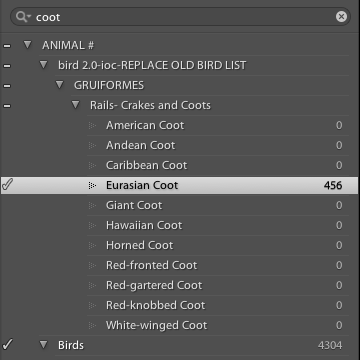
In this example we are changing my Coot keyword to the new keyword Eurasian Coot in the new bird keyword list I have downloaded and imported.
So first in the keyword list find your old keyword and click on the arrow that appears on the far right of the keyword, this will filter your photographs by that keyword, you can then select all your coot photographs with a simple Command-A (Ctrl-A in Windows), then find the new keyword, click on the far right of it so the tick appears like in the above screen print. All your filtered keywords now have the old and the new keyword. You can then safely delete the old keyword.
Rumour of a new Leica Monochrom Type 230
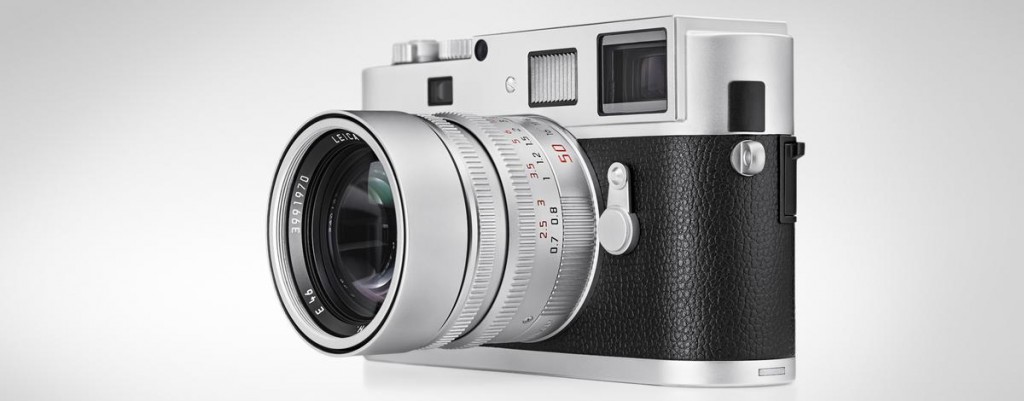
This week to celebrate Leica’s 100 year of making 35mm camera’s a number of special additions were announced as well as a Leica M Monochrom in silver.
But someone with did spot something far more exciting which was published on the leicarumors.com website. The current Monochrom is based on the M9 while its likely that the new Monochrom is based on the current Leica M240.
It will be interesting to see what the ISO performance will be like. The current Monochrome while CCD based has fantastic high ISO with the Bayer array removed. I expect the CMOS M 240 sensor to be used, so without its Bayer filter I expect off the charts ISO performance.
Lightroom Key wording Part1
Adobe Lightroom is now a many faceted program, as well as a RAW processor one of its strengths is that of a DAM package, that is Digital Asset Management.
Adding metadata and keywords greatly easies your life as a photographer and being able to find a photo months and years later for a client is important.
Every so often I find I have gotten behind in my metadata and key wording, so I create a collection, sync it over to PhotoSmith on the iPad then in my breaks I keyword and add the metadata that may be missing. Then when back at home with my master Lightroom catalogue its a quick sync to update.
One of the issues I have is that my Keywords often get into a mess and you need to have a cull and sort out. Creating a keyword list ideally needs planning.
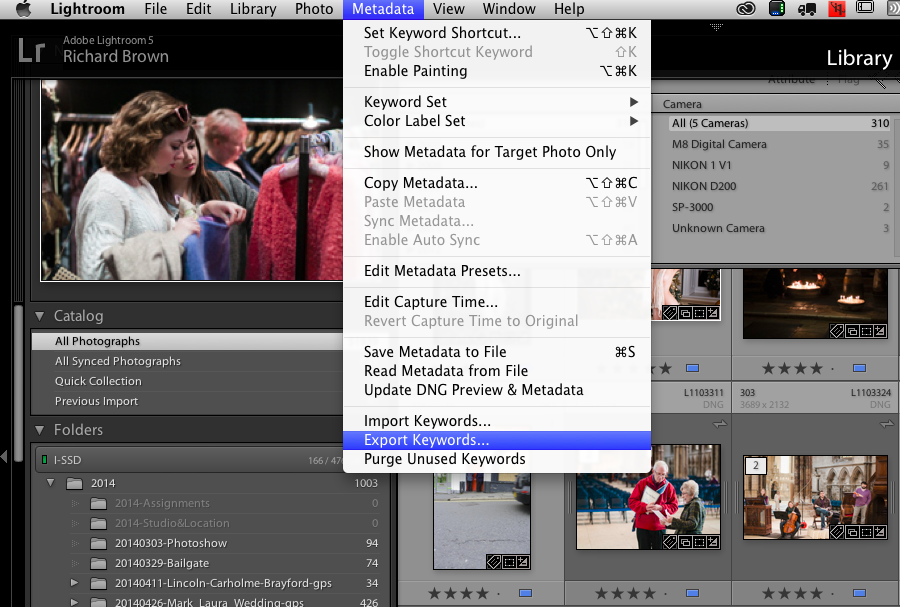
First of all its a good idea to see what you already have, you can export your keywords using the Metadata menu and selecting Export Keywords.
I had been adding keywords to the birds round Brayford Pool but my bird list had really gotten out of shape.
Here is an extract:
[Birds]
<InsertTAB>Black-headed Gull
<InsertTAB>Canadian Geese
<InsertTAB>Carrion Crow
<InsertTAB>Chicken
<InsertTAB>Common Tern
<InsertTAB>Cormorant
<InsertTAB>[Duck]
<InsertTAB>Eider Duck
<InsertTAB>Flamingos
As you can see while there is an attempt at structure as you can see by the folder keyword Duck, but then I went and put Eider Duck at the same level and not under it. It really needs a major sort out.
Now you can buy keyword lists some of which are very good and if your a stock photographer shooting a lot of stock images each month they buying a keyword list can make a lot of sense, for a few hundred pounds you get a very comprehensive keyword list.
You can make your own just open a text editor and create your keywords.
Master folder keys have the keywords in square brackets, and you nest them using tabs. The best way to start is to export your current list then open it up in a text editor, it will soon make sense.
eg:
[People]
<InsertTAB>[Models]
<InsertTAB><InsertTAB>[Male]
<InsertTAB><InsertTAB><InsertTAB>John
<InsertTAB><InsertTAB><InsertTAB>Peter
<InsertTAB><InsertTAB>[Female]
<InsertTAB><InsertTAB><InsertTAB>Jane
<InsertTAB><InsertTAB><InsertTAB><InsertTAB>{Art Nude}
<InsertTAB><InsertTAB><InsertTAB>Kate
<InsertTAB><InsertTAB><InsertTAB><InsertTAB>{Fashion}
The key to remember is that it is a TAB delimited format so above where you see <InsertTAB> you want an actual TAB but make sure you use an editor that supports plain text correctly so if your a Windows user not Notepad, try the Notepad+ available for download or even a spreadsheet. Many spreadsheets allow you to export files TAB delimited.
To make keywords more meaningful you can also add notes to keywords. Create yourself a new keyword structure then I suggest you create a new blank catalogue rather then break you master.
With the test catalogue import your new list and see how it looks. Have a good play before you amend you master catalogue. Unfortunately once you have imported it merges with your current keywords so you will then have a major organisational task ahead but at least you have the keyword structure you want.
A Walk around Brayford Pool
Earlier this month I took a walk round Brayford Pool area and took a few snaps with my Leica M4. This being a film camera and there still being 2/3rd’s of a roll left I have not yet developed and scanned the film.
One thing I did notice was a Mute Swan had built a nest on one of the paths in the area. Chris has since taken a lot more photographs of the nest which you can see here.
Since updating my Nikon V1 last week I have been giving it a good test again and this week I took it with the 30-100mm (70-300mm 35mm field of view) lens for a walk round the Brayford Pool area of Lincoln.
 I had three main purposes in mind. The first was to see if I could find the nest again belonging to the Mute Swan who had in mine and Chris’s opinion taken too big a risk nesting so close to a path. I was pleased to see it was still there, though a pigeon was taking a bit of a risk; he kept approaching the nest and stealing bits of material for I presume his own nest.
I had three main purposes in mind. The first was to see if I could find the nest again belonging to the Mute Swan who had in mine and Chris’s opinion taken too big a risk nesting so close to a path. I was pleased to see it was still there, though a pigeon was taking a bit of a risk; he kept approaching the nest and stealing bits of material for I presume his own nest.
The second reason as previously mentioned was to give the Nikon Series One V1 a good test following the firmware update.
Lastly I wanted to do some workflow testing. I was interested in ‘In The Field Triage’ and how Lightroom Mobile would fit into this.
I had previously tested the import options of Lightroom mobile and it does not have RAW support so you either have to use a real RAW developer like PhotoRAW on the iPad or use an application like PhotoSmith to get your pictures onto the iPad, then you can start work then sync over to Lightroom. Once its back in Lightroom then Lightroom Mobile can do its stuff.

I’ll blog more about how I got on and used Lightroom Mobile and PhotoSmith and PhotoRaw in another post.
Baby Sparrows – Long Lens Alternative
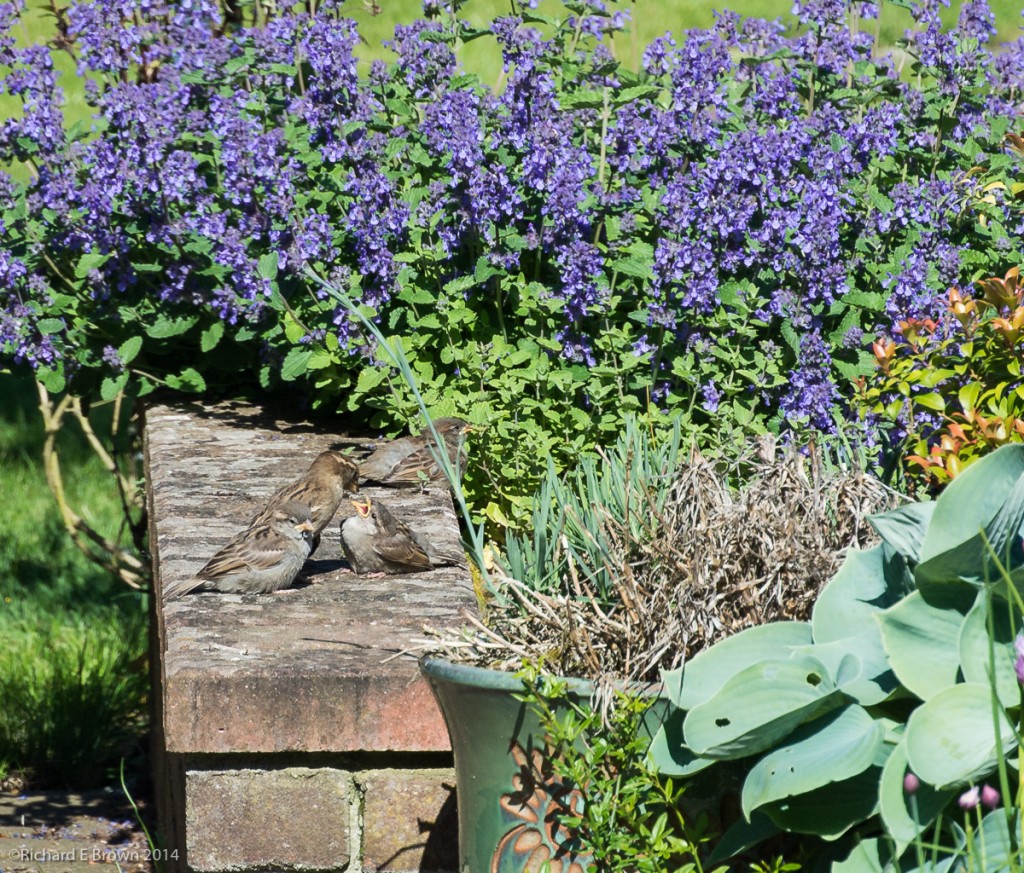
I have a love hate relationship with my Nikon V1, it suffers from a number of issues, poor ergonomics, image review you can not turn off, and the sensor for switching between the back screen and EVF has a habit of not working.
On the plus size, for the sensor size the image quality is great, the camera and lens are small and compact and I can carry a large system in a very small bag and for me the build in EVF is very usable.
The Nikon One series has some of the fastest auto focus of all mirror less cameras so is well suited to some tricky subjects.
We have a lot of wildlife in our back garden, lots of birds from Robin’s, Gold Finch, Green Finch, Tree Warbler as well as lots of House Sparrows, Black Birds, Pigeons and even Pheasants.
I spotted this adult House Sparrow feeding its newly fledged youngster. I quickly grabbed my Nikon V1 with the 30-110mm lens, this makes it a 300mm lens in 35mm photography terms so if great for this kind of shot.
I generally use the Nikon V1 as a compact, but due to my frustrations with the viewfinder and ergonomics I have been thinking of replacing it with either a Ricoh GR (fixed 28mm lens), or a Fuji X100s. I have even considered the Leica T as I could also use it as a spare body for my Leica glass.
But days like this the camera shows its strengths, and Nikon are even planning to launch a zoom with the 35mm equivalent reach of 800mm, its going to be expensive at around £800 but for that kind of reach a real 800mm lens would cost many thousands of pounds.
So my Nikon V1 may well stay around for this kind of thing a little longer for when I want good reach in a small system, but its days as my carry everywhere compact are numbered.
The Duck Race – Zone Focusing
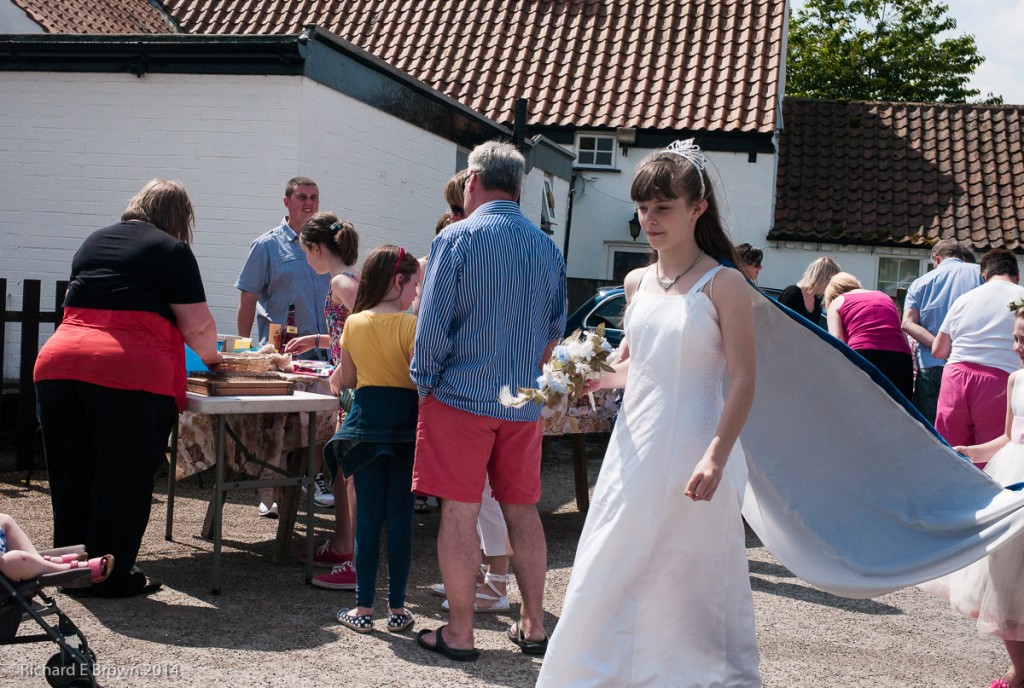
Sunday was the local Duck Race to raise funds for the local school.
This years May queen was in attendance and we had cake stalls and raffles.
It was a fun few hours and I took with me my little Leica M8 with a 35mm Summicron lens.
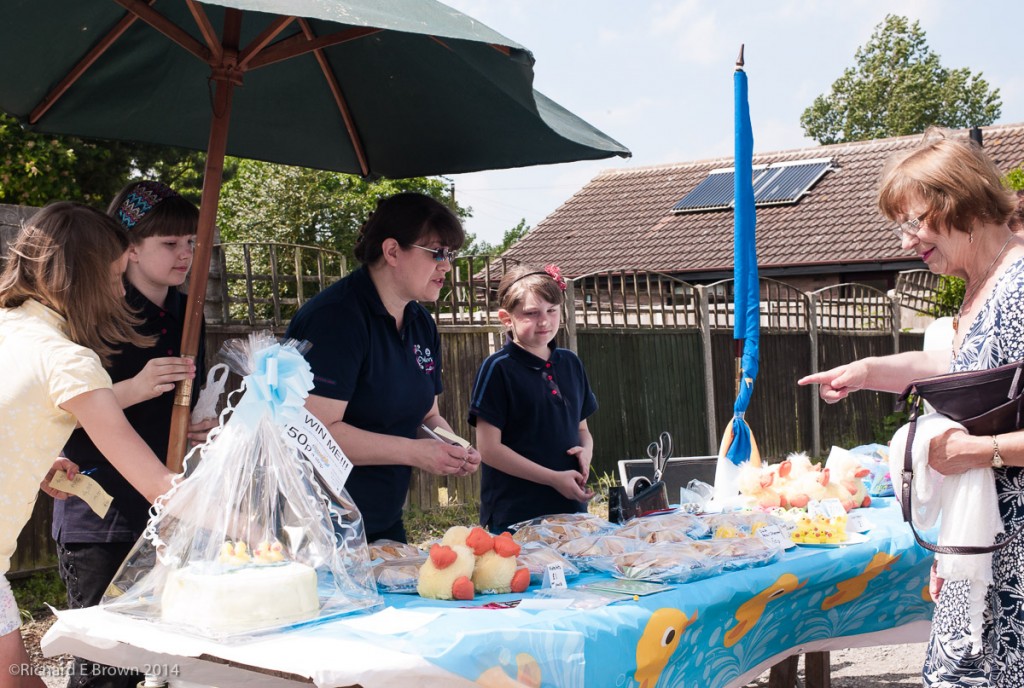
May people now rely on autofocus but on a bright sunny day if your shooting with a wide angle lens it really is not necessary to rely to on autofocus.

The majority of these shots were taken with zone focusing, something that used to be common and easy but now with many modern lens lacking the focus scale it has gotten harder.

With the camera set to f/8 my 35mm lens had lots of depth of field, and I could shoot fast. Many street shooters rely on zone focusing and its something that Fuji are improving with there cameras.
If your like me and shooting with manual focus lens with the depth of field scales marked on them, it is of course much easier.
Adobe Cloud Services are back
Adobe have fixed there issues and we are back in business.
